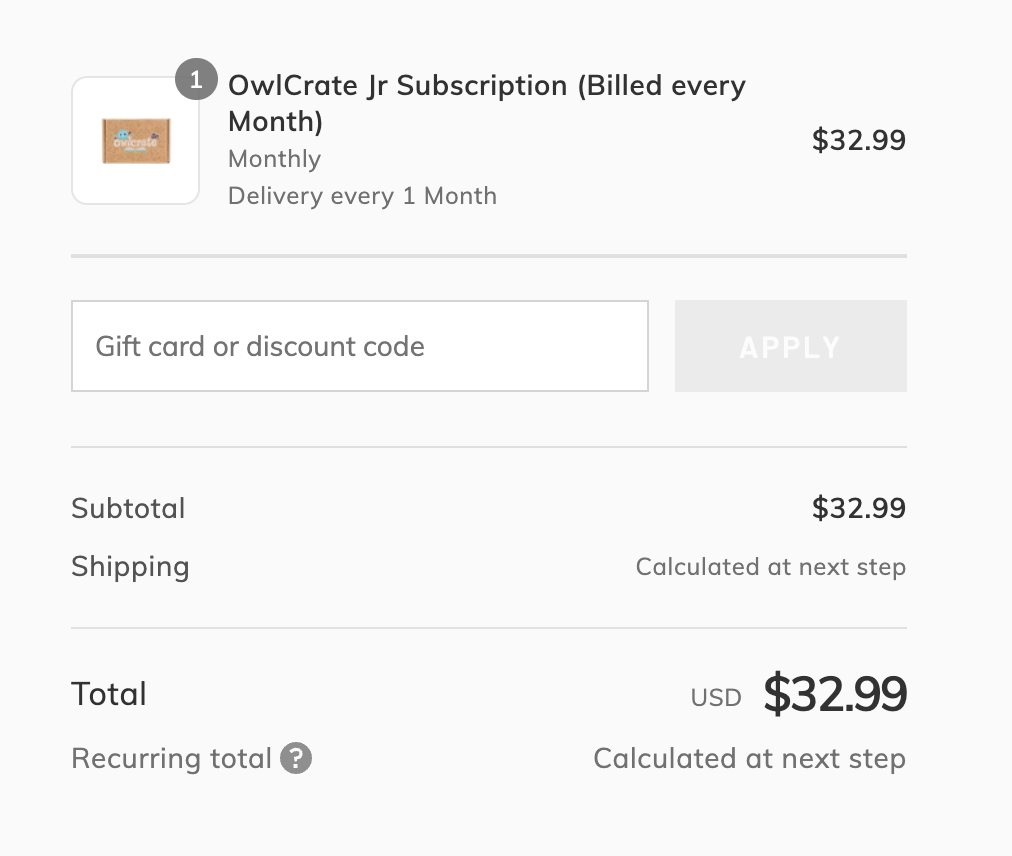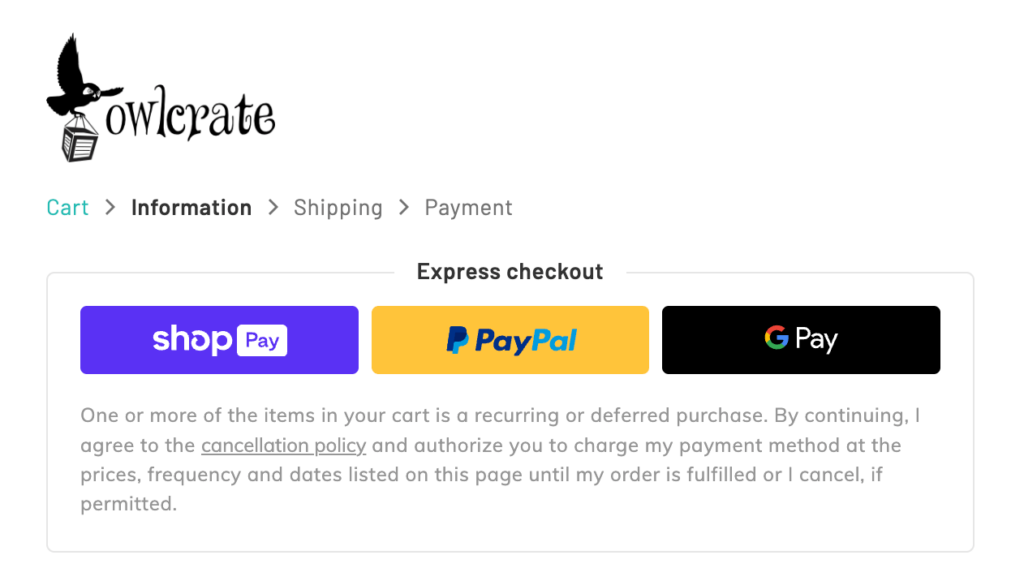Acquiring customers, turning them into loyal brand followers, and then encouraging them to continue making purchases with your brand requires a lot of focus and attention for DTC ecommerce merchants. Don’t let the checkout experience trip up these customers—having a clear strategy to reduce cart abandonment is crucial to ecommerce success.
Cart abandonment can happen for a variety of reasons, including:
- A checkout flow that’s confusing
- An unclear return policy
- A lack of payment options
- Unexpected shipping costs
- Requiring customers to create an account
As an online store, you can calculate cart abandonment rate by dividing your total number of completed purchases by the total number of created online shopping carts. Because this metric is so specific, it can help your company see how well your checkout process is working for online shoppers, and where you can make improvements.
In this blog post, we’ll dive into how you can reduce shopping cart abandonment and optimize the checkout experience to help you increase ecommerce sales and LTV and offer a smooth online shopping experience for all your customers.
Key takeaways
- The decision to abandon a shopping cart can happen in a split second—making the checkout process a crucial part of your ecommerce store’s success.
- Enabling specific strategies to optimize your checkout experience will help your store reduce cart abandonment and even improve customer lifetime value.
- Making your checkout process smooth and straightforward will lead to more conversions for online retailers.
Why does shopping cart abandonment occur?
In order to understand how to reduce cart abandonment, ecommerce stores have to first understand why cart abandonment occurs in the first place. As mentioned above, there are a number of reasons why a shopper might abandon their cart—and most of them have to do with the checkout process.
The common friction points that shoppers experience when they go to checkout—like unexpected shipping costs or a lack of payment options—can lead them to stop the checkout process altogether. As shopping online has become commonplace, customers expect a quick and simple checkout flow. And when they don’t experience that, they often don’t even bother with purchasing whatever they placed in their cart.
For this reason, online retailers must ensure that their checkout pages are straightforward and keep user experience at the forefront. A high shopping cart abandonment rate can lead to lower revenue and lower customer lifetime value, as shoppers might not return after a bad experience.
4 strategies to reduce shopping cart abandonment
To reduce online shopping cart abandonment, ecommerce merchants can focus on these four strategies that will help optimize the checkout flow and ultimately lead to reduced shopping cart abandonment.
1. Simplify the checkout page & overall process
The first order of business is to streamline the steps required to checkout. This will minimize friction and encourage customers to complete a purchase, as they can do so quickly and easily. Many customers abandon their cart when they realize they have to make an account to purchase—so offering a guest checkout option is a great way to avoid abandonment due to that reason.
Additional ways that online stores can simplify their checkout process include:
- Creating a one-page checkout
- Optimizing the mobile checkout experience
- Enabling autofill for addresses, credit card details, and other customer information
- Enhance your site-loading speeds
- Offering guest checkout options
If you want less shoppers to abandon their carts, then these steps to simply checkout are a great first step. Many shoppers expect this quick and straightforward checkout, and once they know how easy it is to shop with your online business, they’ll be more likely to return for other purchases.

2. Provide payment flexibility
The payment process is another huge aspect of reducing shopping cart abandonment. Ecommerce retailers should be doing everything they can to make payment options flexible and convenient for customers, to encourage them to complete their purchases.
A few ways your ecommerce site can avoid cart abandonment and optimize the payment process are by:
- Offering multiple payment options
- Offering multiple currencies
- Allowing customers to pay in installments
- Offering customers to purchases the items one time or as a subscription
By giving customers more choices, like with multiple payment options, you can ensure at a higher level that they’ll go through with their purchase.

3. Communicate clearly & transparently
This next strategy applies even before customers get to the checkout page. Shoppers abandon their carts when unexpected things come up—like high shipping costs or a return policy they weren’t aware of. If you want to earn customer trust and target cart abandoners at the same time, ensure your communication is clear at every customer touch point leading up to and through checkout.
Here are a few tips for improving transparency around communication involving checkout:
- Communicate shipping fees and policies clearly
- Make it easy for customers to make returns and exchanges
- Showcase any cost savings for the customer on the checkout page
- Reassure customers of shipping dates and other common post-purchase expectations
4. Monitor & test
To ensure your strategies to reduce cart abandonment are working, your online store should keep an eye on how the checkout process is functioning and if your cart abandonment rates are decreasing. It’s crucial to watch the analytics and A/B test in order to optimize the checkout flow—try different wording, button placements, and more to see what customers respond to best.
In addition, ecommerce sites can implement strategies for abandoned carts that help them win customers back. Sending direct checkout links is one clear way to get customers to return to their abandoned cart and go through with the purchase this time.
Setting your ecommerce store up for success with lower cart abandonment rates
It’s possible for your ecommerce store to actively work to reduce cart abandonment with the strategies highlighted in this blog. By simplifying the checkout page, offering clear communication throughout the checkout process, and continually improving upon the checkout experience, your store will be able to increase revenue and LTV thanks to lower cart abandonment rates. Create a frictionless checkout process and watch these metrics soar.
Sources
[1] Cart abandonment rate (Recharge ecommerce glossary)
[2] Targeted marketing strategies: Unlocking potential with direct checkout links (Recharge)



